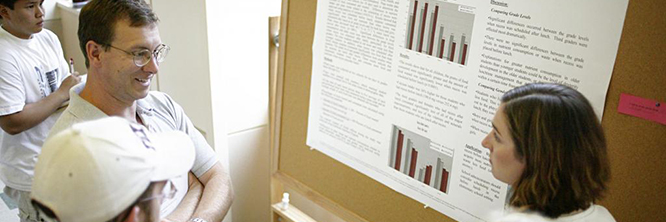Quarantine's Hold on Virus Growth
Document Type
Oral Presentation
Campus where you would like to present
Ellensburg
Event Website
https://digitalcommons.cwu.edu/source
Start Date
18-5-2020
Abstract
Pandemics can seemingly arise out of nowhere in a moments notice, whether we are dealing with the common cold, or something we haven't experienced before like COVID-19. Being prepared for these pandemics and understanding how to better prevent them is step one for providing better help in the future. We will be investigating how different quarantine strategies influence the spread and growth of viruses over time. In doing so, we hope to learn how quarantine can be used more efficiently in the future. We will evaluate this by incorporating real world data into mathematical models for viral propagation using code in MATLAB. We will create different scenarios using differential equations. We examine how the overall infection rate of a virus can be slowed by different quarantine measures. We also demonstrate that adopting quarantine measures in an effective time frame helps prevent overall spread and growth of the virus. These findings are not a "one size fits all" for any one pandemic. Quarantine is not always required, but knowing when it could be useful is important, just as much as knowing when to lift quarantine restrictions once the peek of spread has passed. Hopefully this information can help contribute to pandemic response strategies in different regions.
Recommended Citation
Bice, Devon; Lawton, Brenden; and Bell, Jackson, "Quarantine's Hold on Virus Growth" (2020). Symposium Of University Research and Creative Expression (SOURCE). 79.
https://digitalcommons.cwu.edu/source/2020/COTS/79
Department/Program
Physics
Additional Mentoring Department
https://cwu.studentopportunitycenter.com/2020/04/quarantines-hold-on-virus-growth/
Quarantine's Hold on Virus Growth
Ellensburg
Pandemics can seemingly arise out of nowhere in a moments notice, whether we are dealing with the common cold, or something we haven't experienced before like COVID-19. Being prepared for these pandemics and understanding how to better prevent them is step one for providing better help in the future. We will be investigating how different quarantine strategies influence the spread and growth of viruses over time. In doing so, we hope to learn how quarantine can be used more efficiently in the future. We will evaluate this by incorporating real world data into mathematical models for viral propagation using code in MATLAB. We will create different scenarios using differential equations. We examine how the overall infection rate of a virus can be slowed by different quarantine measures. We also demonstrate that adopting quarantine measures in an effective time frame helps prevent overall spread and growth of the virus. These findings are not a "one size fits all" for any one pandemic. Quarantine is not always required, but knowing when it could be useful is important, just as much as knowing when to lift quarantine restrictions once the peek of spread has passed. Hopefully this information can help contribute to pandemic response strategies in different regions.
https://digitalcommons.cwu.edu/source/2020/COTS/79

Faculty Mentor(s)
Erin Craig